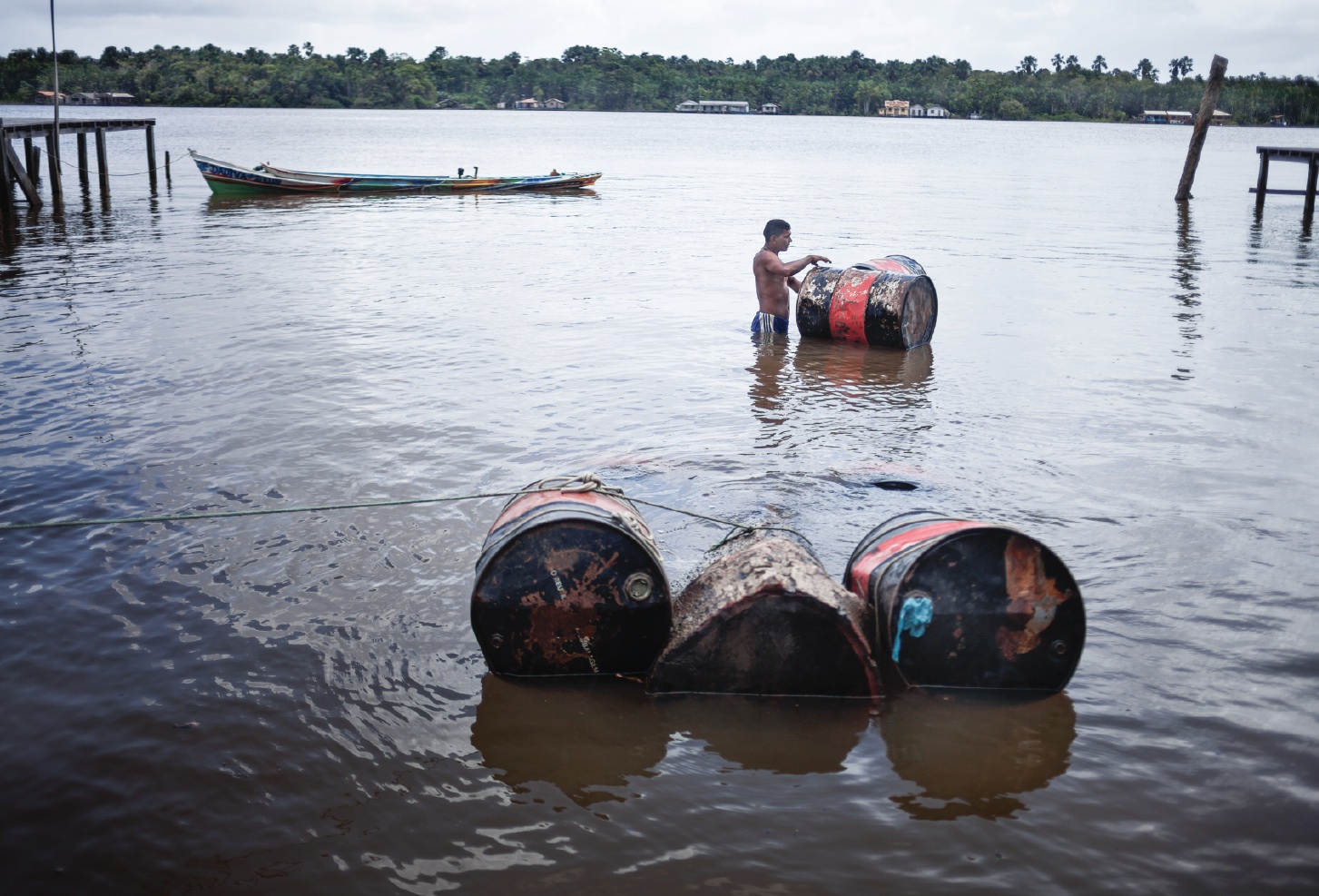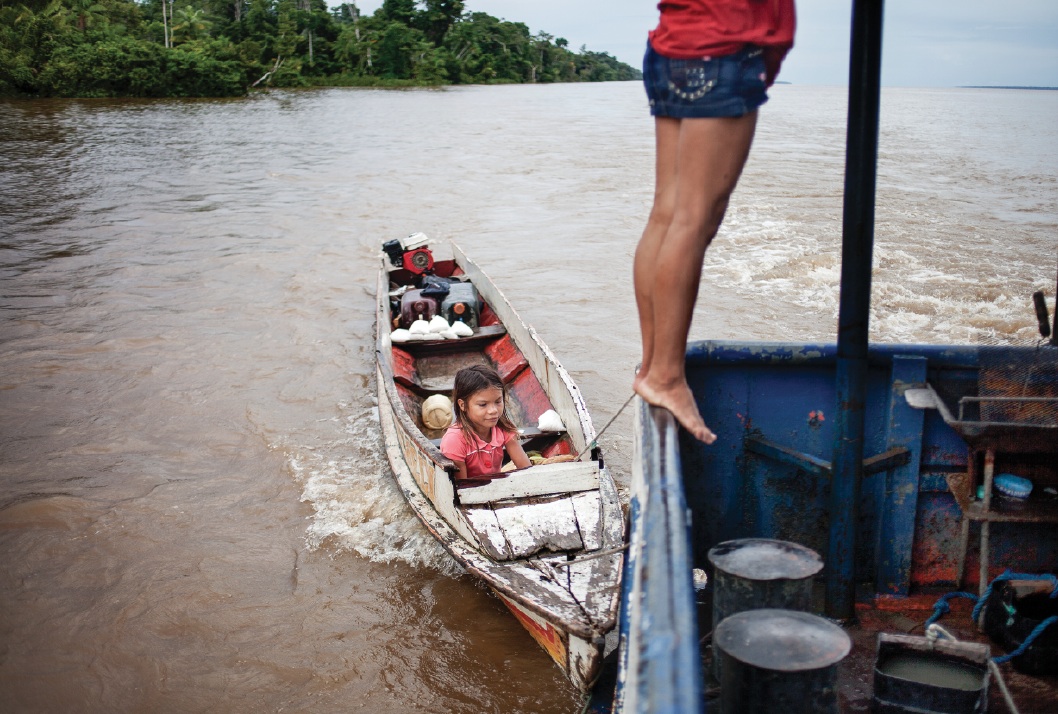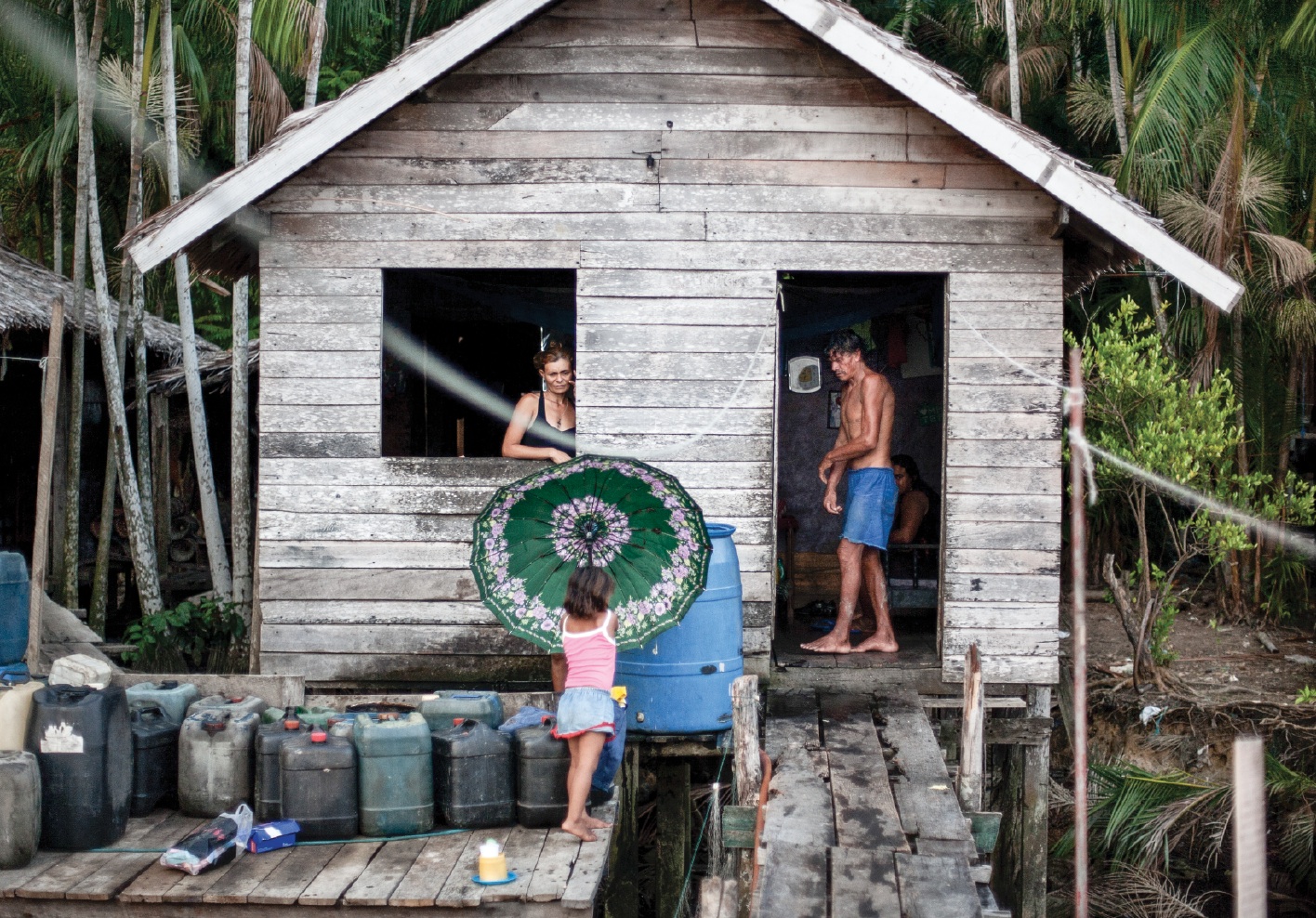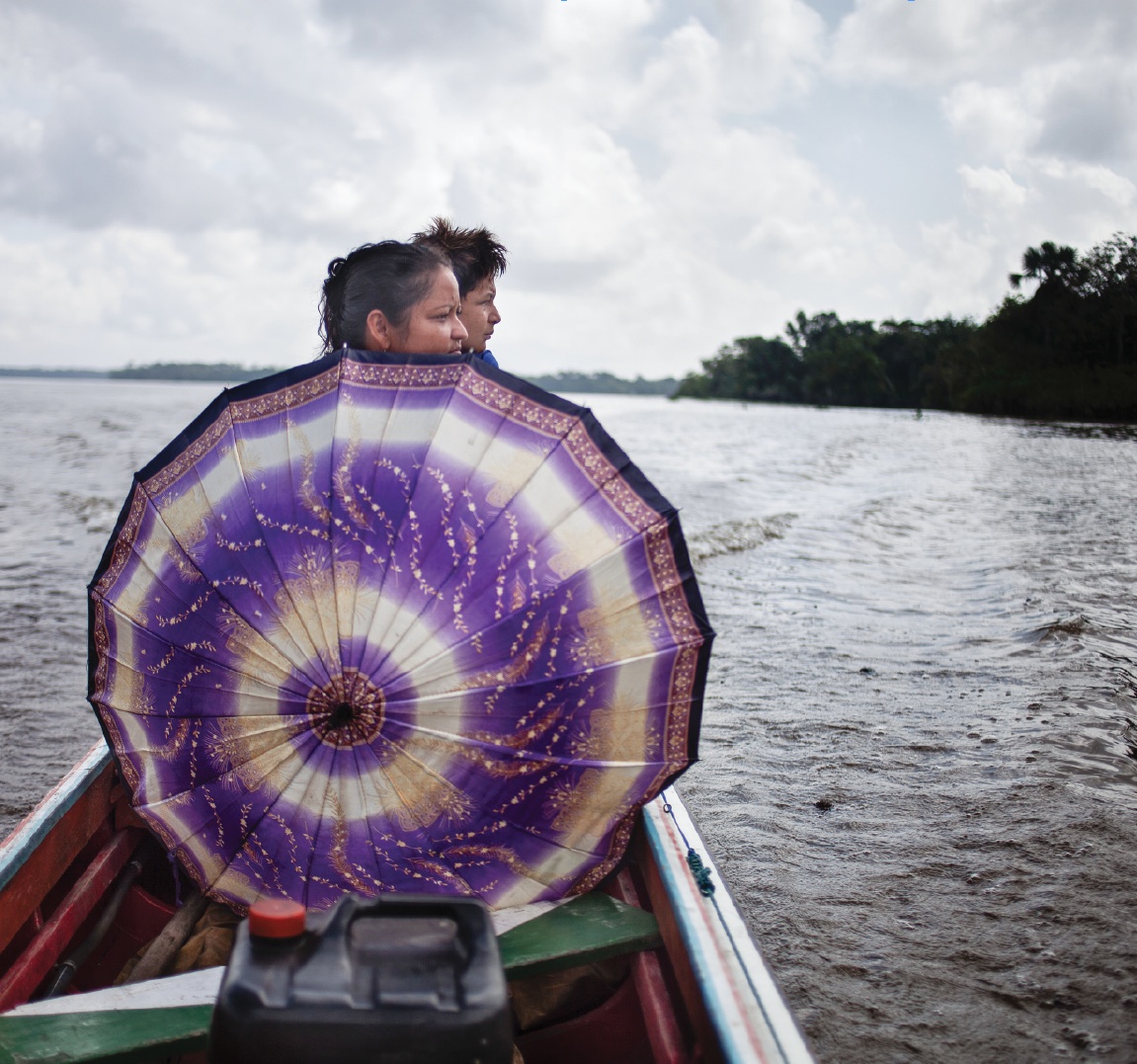The small village of São Francisco da Jararaca, located on the island of Marajó, on the Amazonian Delta, is practically a forgotten place—almost impossible to find on a map, which wasn’t always the case. Established in 1888 by the Portuguese explorer Francisco Nogueira, its port of Cajuba was once a thriving home to a salt refinery that drew ships from as far away as the United States and Germany. During the Amazon’s relentless deforestation, Nogueira established a lumber mill that employed nearly every inhabitant of Jararaca, providing them with electricity and other vital services. Nonetheless, according to local elders such as Seu Severo, villagers were used as slaves. Many were kicked off their own land if they didn’t accept the low prices offered by the wood refinery. In the 1990s, under international pressure, Brazil finally began to clamp down on deforestation. Nogueira’s lumber mill was eventually shuttered. Jararaca was devastated. Many men, desperate for work, moved to Belém and other cities.
What remains on these muddy banks of the Rio Pará is a sleepy village—a community of ribeirinhos (river people) for whom a small schoolhouse is the only sign of government service. Villagers eek out a living in whatever way they can. On most mornings, children hop into small canoes and row against the current to catch bundles of hand-me-down clothes and food tossed from ferry boats passing through the straits.
Ferries, rafts, canoes, ships: Day and night, the strait resembles a highway on the water, with locals latching small canoes to cargo ships, then climbing aboard to try and sell whatever goods they can to mariners. Açai, the berry reputed to have a range of health benefits, is the main commodity. Some villagers sell shrimp. Others sell sodas, turtles, meat, and fish.
The biggest prize for villagers is diesel oil. The cargo ships always carry an extra supply of it, which crews trade for money, food, and more recently, time alone with young girls who have little other opportunity than to offer their bodies in exchange for this coveted liquid.
Diesel along these parts of the Amazon has become a more viable currency than banknotes, since the entire region of Marajó depends on it. With many communities like Jararaca still without power, most families, if they can afford it, rely on generators for a few hours of electricity per day.
“I use up to two liters of oil just to watch a novela,” said Carina, a twenty-eight-year-old maid from Belém whom I met in Jararaca, during her visit with family on holiday. A liter of diesel in these parts goes for R$2.50 to R$3.00—as opposed to R$1.90 in Belém—and most families who have running generators spend between R$200 and R$300 a month on oil, depending on their level of consumption. The lack of electricity has had a profound effect. Preserving food would be all but impossible without boats arriving daily with shipments of ice. Running machinery that could provide viable work is almost prohibitively expensive. For the most part, though, many savor their few hours of electricity by watching soap operas.
It isn’t surprising that the women of Jararaca and its neighboring communities have turned to selling their bodies for a few liters of fuel; exchanging sex for food, money, and now diesel is something of a dark pastime of the region. “In the 1940s, when logging came to be the principal economy of some Amazon regions, especially in the rainforest, the presence of foreign ships intensified the old practice of the seduction of adolescent girls,” says Professor Agenor Sarraf Pacheco, a social historian at the Pontifical Catholic University of São Paulo. “Many times the girls are conscious of the dangers that their immersion in that world can bring. Others are encouraged by their mothers, aunts, or sisters with more experience, showing them that this world can offer them a better life.”
Although practiced in public silence, the culture of sexual exchange in the Amazon has become somewhat culturally accepted, with many families of up to three generations of women “doing the program,” as it is commonly called.
And yet “prostitution” isn’t exactly the right term for what goes on here. For the more experienced women of the cargo ships, their sexual encounters have become more like love stories, filled with gifts of perfume, sometimes televisions, and, most importantly, the promise of a better life—a way to escape the depressing reality of the ribeirinha. However silent, rules of the practice do exist. The balseiras (as the women who work these ships are called) come to know the mariners who pass their village on a weekly basis, such as those hauling wood back and forth to Belém from the forest. Each balseira frequents one specific mariner on each ship, who must be faithful to her only in the area where she lives. If he isn’t, and she discovers it, her reaction might be that of a wife betrayed. In return for sex, she is rewarded with diesel, sometimes other gifts. They adhere to what may be called a localized faithfulness. Yet the many passing ships from Belém to Santarém and Manaus carry truck drivers who have no lasting relationship with the balseiras. The drivers pass through the river just once, and it is on these boats where women perform a more conventional type of prostitution, sometimes with up to ten men in one trip.
In a local myth, known as the legend of the boto, an Amazonian dolphin emerges from the Pará River to seduce a young woman, then leaves her impregnated before returning to the water. The legend plays itself out daily in these straits. Girls and housewives alike row their canoes furiously under a beating sun or torrential rain in the hopes of latching on to a cargo ship and offering themselves to these men. The ships are considered by many balseiras as an escape from a monotonous life on the river, with each mariner a prince charming of sorts.
“I hope my daughter will get together with a captain of one of these cargo ships, in order for her to get out of here,” Dona Raimunda told me. “But she doesn’t want to, she’s in love with someone else. She is going to end up living the same life as me, on these rivers, from one cargo ship to the next. Now that she’s in love, she doesn’t even help me with work. I’m alone.”
Alessandra, eighteen (right), and her niece Maria, eight, board the Matheus Pinto cargo ship to sell tapioca. Alessandra, whose mother is a prostitute, became a balseira when she was eight years old.
The legend of the boto is often used to explain illegitimate children and perplexing love stories along this river, which in itself has become almost mythical for its lawlessness, its sinuous mixture of nature and men. Most veteran balseiras average seven to nine children, usually with different fathers. When I asked Jessica, twenty, if she ever knew her father, she seemed embarrassed, and said her mother had never explained the circumstances of her birth. Jessica said she hoped to break with the tradition of balseiras in her family. She goes to school. She badly needs glasses—which she can’t afford, and which she can’t seem to get from any of the medical charity boats that more often than not simply pass by Jararaca.
In pursuing an education, she said, she’s the exception among her friends, who already work the ships.
I met another girl, Pamela, the day she returned from the clinic in Boa Vista with her newborn baby. Just thirteen, she lay in a hammock in a brittle shack she called home, her face a mixture of terror and pain. Her baby lay untouched in an adjacent hammock. Her mother and visiting friends berated her to breastfeed, but she just lay there, barely saying a word.
It’s tempting to wonder whether the balseiras will disappear if Jararaca should finally get the power lines that have been promised since 2007. Neighboring communities such as Ponta Negra have received electricity through a government-sponsored program called “Luz para Todos,” through which families pay as little as R$20 per month. In Ponta Negra, one of the most notorious areas for cargo-ship prostitution, the practice has slowed, but it remains unclear whether this is a result of police cracking down on the practice or a lack of dependency on diesel.
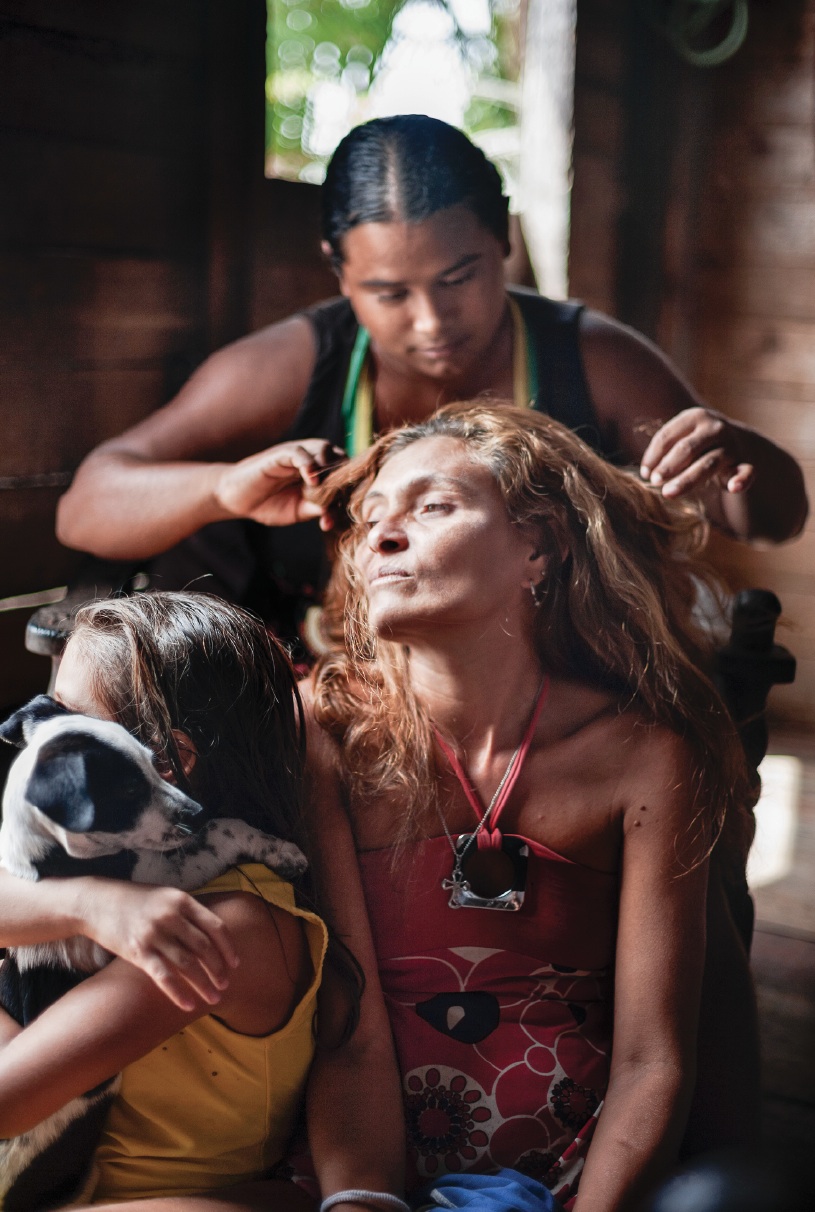
- Jamaica picks lice from Nazaré’s hair as Nazaré’s daughter (L) plays with their new dog. Nazaré sold goods on the cargo ships for some years until her husband Lucevaldo stopped her. Now the family survives on his earnings trading oil.
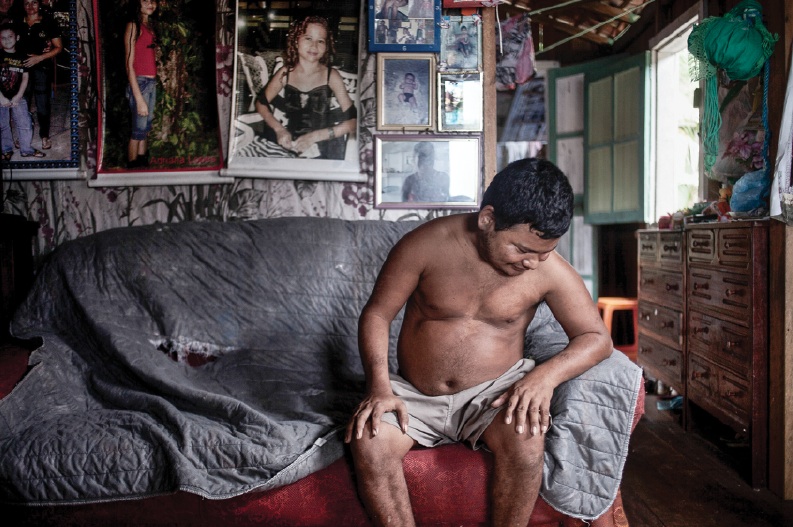
- Ezekuel Tecera Lopes, thirty-three and disabled, lives at home with his mother, Maria, who has been a balseira for fifteen years. “God willing,” she says, “one day I’m going to get out.”
When I asked Professor Sarraf what would be the catalyst for change, his response was as expected: “The ribeirinha communities need to be assisted by social and government institutions, because the debt created by the lack of these institutions is historically immense. But more importantly, they need a job that values the ribeirinha culture—that is inclusive—to convince these communities into believing that a dignified life, as such, is possible. A different kind of education needs to be practiced. They need professional courses that guarantee earnings by utilizing the resources of the forest in a sustainable way.”
For now, the telenovelas dazzle the young ribeirinhas of Jararaca, who can only dream of having the kind of lives they see on the screen. These are dreams of another Brazil they’ll likely never know—and yet their hope is enough to keep this dream alive.



